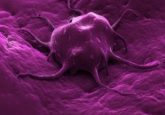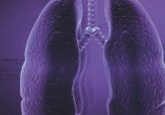Study finds potential effective drug for tailored small-cell lung cancer therapy

A study recently published in Cancer Cell reports that the agent THZ1 caused human-like small-cell lung tumors in mice to shrink significantly, with no apparent side effects. The research was carried out at the Dana-Farber Cancer Institute and the Massachusetts Institute of Technology (both MA, USA).
Small-cell lung cancer (SCLC) is the most aggressive form of lung malignancy and accounts for 10–15% of lung cancer cases. The identification of effective pharmacological strategies to target SCLC biology represents an urgent need.
“Small-cell lung cancer is a disease for which new treatments are desperately needed,” stated Kwok-Kin Wong, medical oncologist at Dana-Farber Cancer Institute. “Patients generally respond well to initial chemotherapy, but the disease almost always returns. Less than 5% of patients are alive 5 years after being diagnosed with the disease.”
Dana-Farber researchers began the study using mice with human-like small-cell lung tumors. Tumor tissue was extracted from the animals and utilized to screen more than 1000 small molecule blockers, in order to investigate whether any were able to halt tumor cell growth. The most successful of these small molecules was THZ1, a recently identified covalent inhibitor of cyclin-dependent kinase 7 (CDK7), a key enzyme in gene transcription.
Inhibiting CDK7, therefore, strikes at the basic machinery of transcription. However, since transcription occurs in all cells, the Dana-Farber team went on to investigate the reason behind the vulnerability of SCLC to THZ1, as it was not observed to affect healthy cells.
“We found that SCLC cells are ‘addicted’ to transcription in a way that normal cells are not,” explained Wong. “They appear to depend on short-lived transcripts – briefly existing RNA copies – that aren’t as critical to normal cells. This explains why normal cells can tolerate a drug that targets the basic transcription mechanism while SCLC cells cannot.”
The compound is now being developed into a drug for testing in human patients in clinical trials. The key to the effectiveness of any drugs derived from THZ1 is to determine the dose and administration schedule that produces the greatest therapeutic effect while producing the fewest side effects.
Sources: Christensen CL, Kwiatkowski N, Abraham BJ et al. Targeting Transcriptional Addictions in Small Cell Lung Cancer with a Covalent CDK7 Inhibitor. Cancer Cell, 26 (6): 909, (2014) Dana Farber Cancer Institute press release




